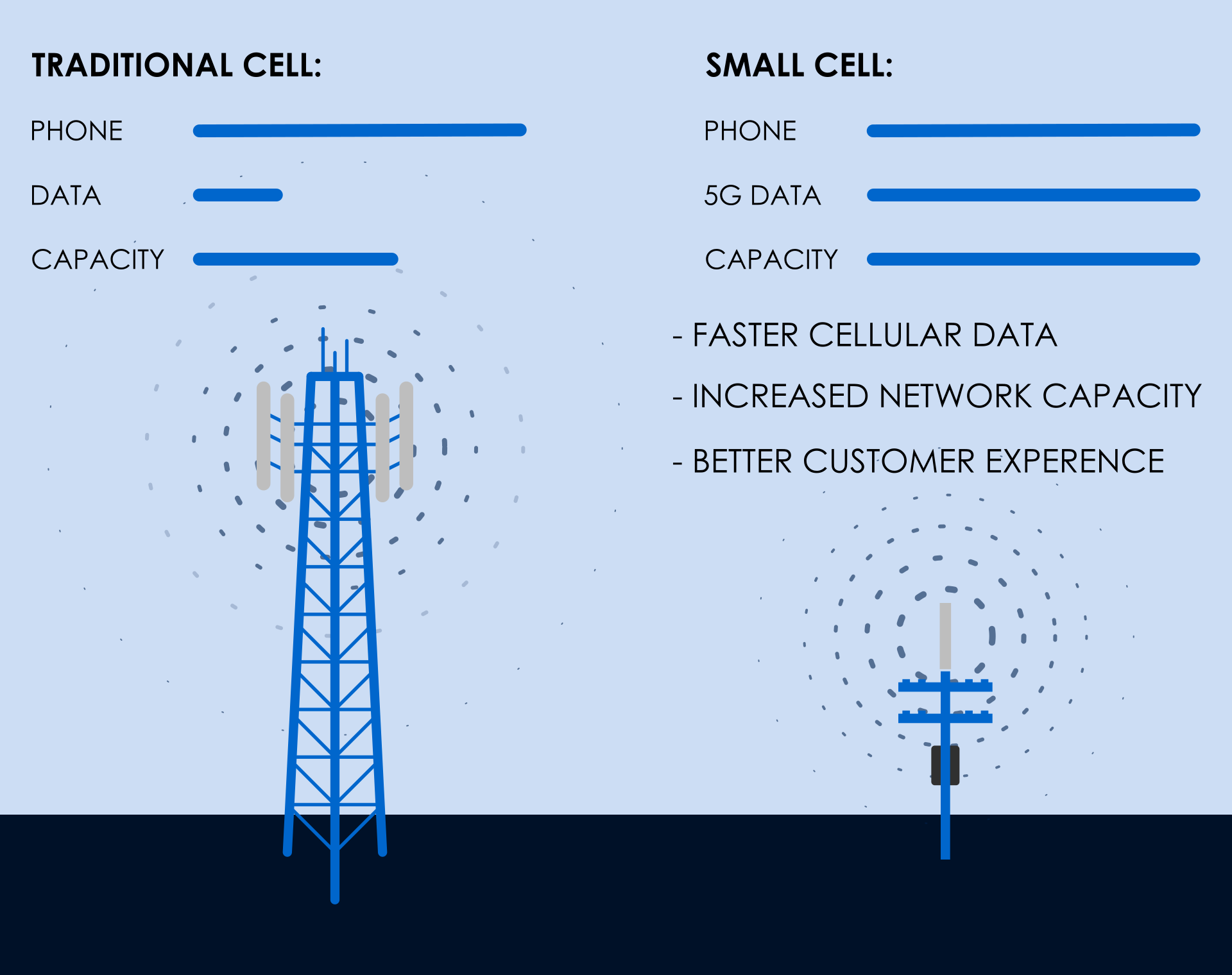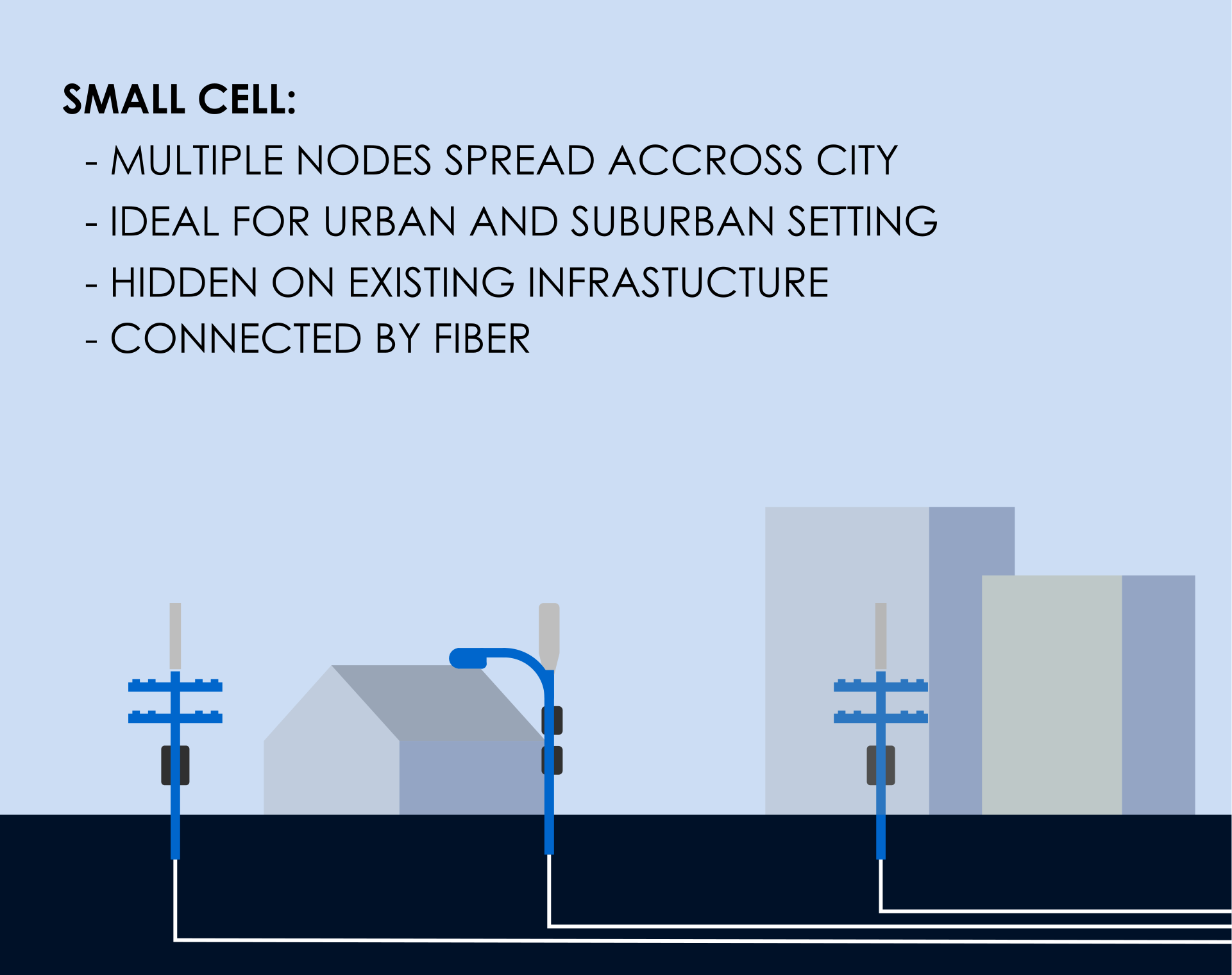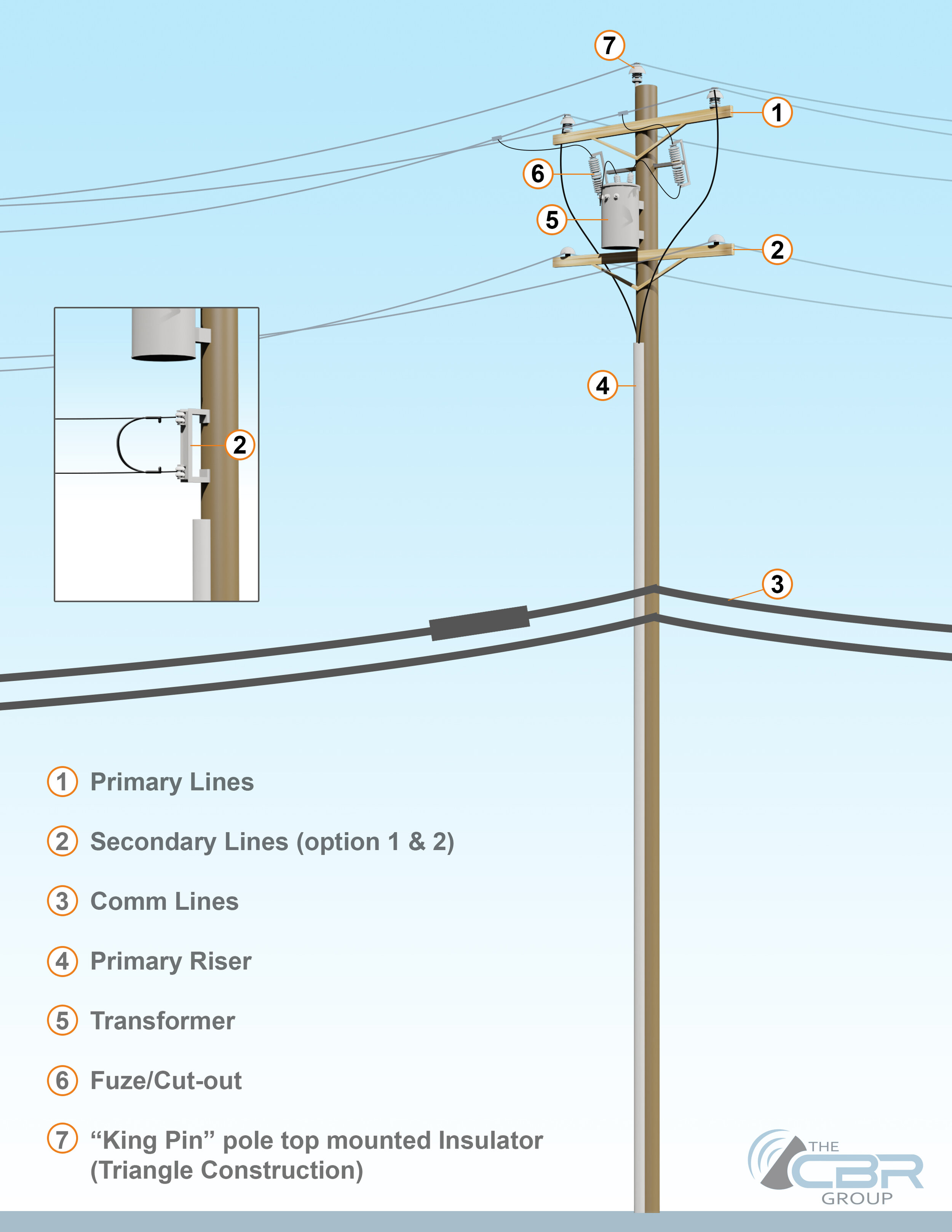CBR & Small Cell
What Is Small Cell?
Small cell wireless technology expands wireless coverage and increases cellular network capacity. Discreetly installed on existing public right-of-way infrastructure such as signs, streetlights, and telephone poles, small cell sites are designed to meet anticipated demand for cellular data and connectivity. As the name suggests, each small cell is physically small, emits less energy, and covers a smaller area than a traditional cell site.
Using small cell sites spread across a community improves reception and delivers greater network capacity and coverage than traditional cell towers by providing more access points to a carrier’s network. Increased signal strength yields faster and more reliable data connections and a reduction in the distance between users and cellular infrastructure. Increased coverage and capacity bolsters access to law enforcement and emergency services and unlocks future innovation such as the internet of things, smart communities, and self-driving vehicles.

Why Small Cell?
Providing reliable access to cellular data is of great importance. In 2016, wireless users used a monthly average of 11 billion gigabytes of data; the equivalent of over 2 billion streaming HD movies. This number is set to increase substantially over the next decade. By 2021, cellular data usage is expected to increase tenfold while making up one fifth of all internet traffic. By that same time, North American wireless customers will become the largest monthly consumers of cellular data anywhere in the world. Over 75% of current homeowners prioritize good cell service and over 55% take cell coverage into consideration when buying a home. Small cell technology is designed to keep up and supply many of these demands. For more information about projected cellular data usage, feel free to check out the links below.

Safety
Small cells are required to comply with the same stringent safety standards that govern macro communication facilities. To ensure safety, the Federal Communications Commission (FCC) requires all wireless communication infrastructure, including small cells, to comply with radio frequency emissions limits and standards. Due to their small size, low wattage, and limited coverage, each small cell site typically generates emissions significantly below FCC limits. To ensure compliance and public safety, CBR always conducts radio frequency studies prior to and after construction.
Each small cell must also comply with any local and state structural and building codes. Structural and engineering analysis is performed on each site prior to construction in order to verify its structural integrity. Each site is designed with significant safety factors in mind in order to ensure its safe and structurally sound deployment.
The CBR Group and our clients routinely work with local, state, and federal jurisdictions to ensure that all regulations are followed, and public safety remains protected. Links to the FCC radio frequency guidelines and other useful information can be seen below.







